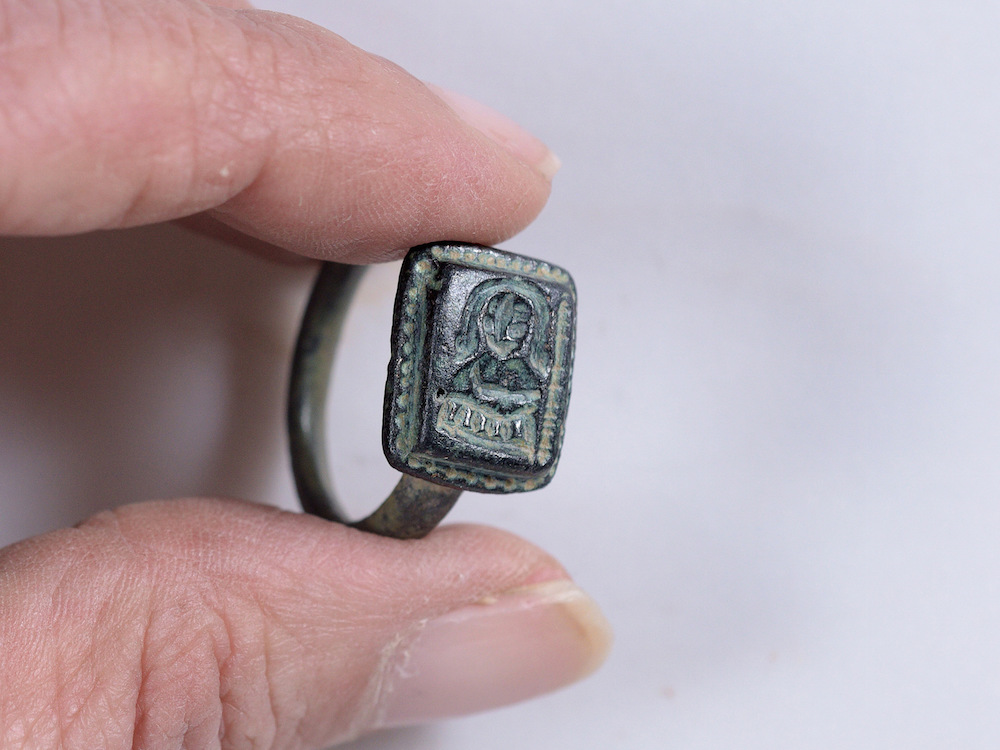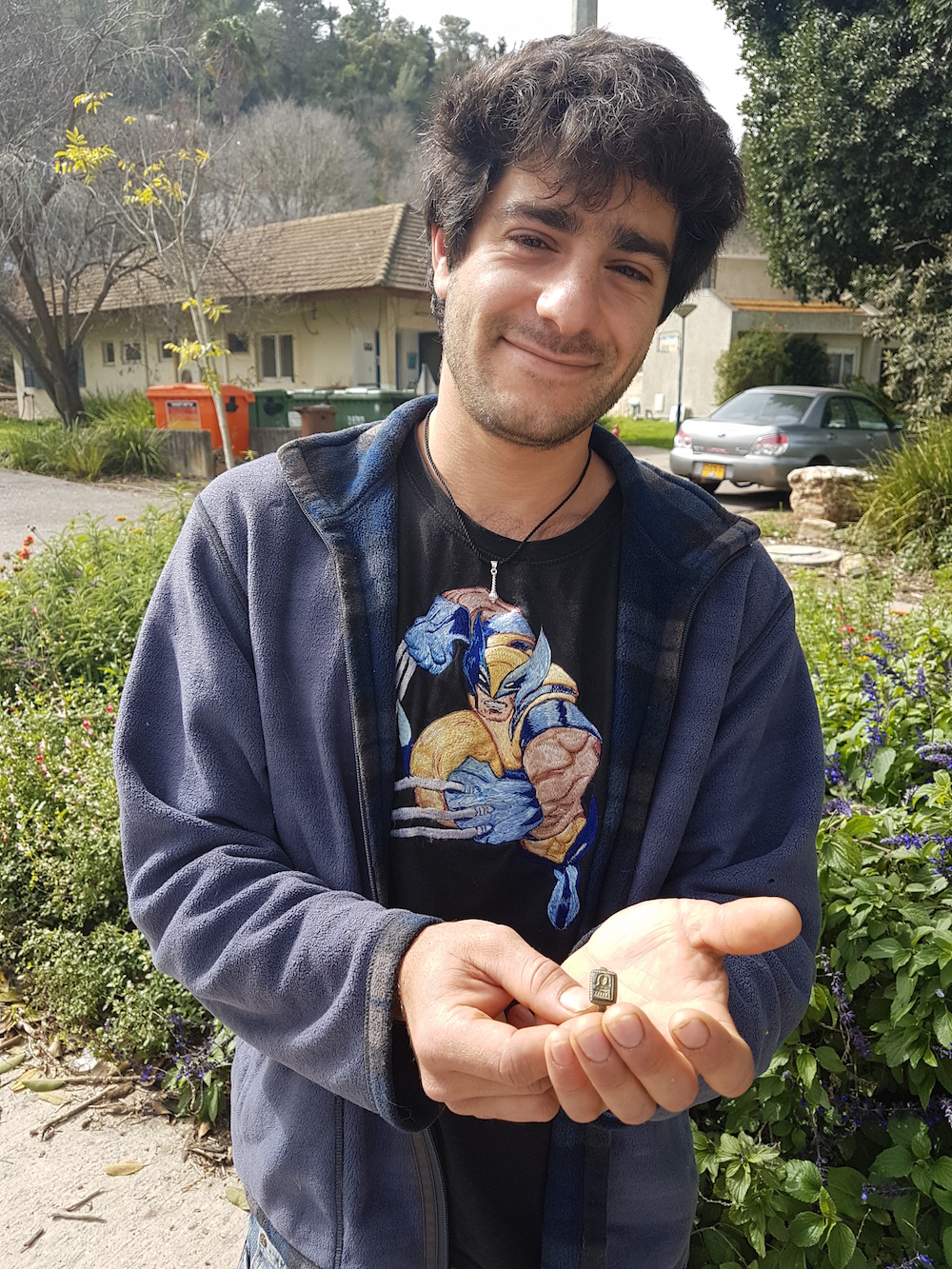Possible Crusader Ring Depicting St. Nicholas Unearthed in Israel
The gardener, Dekel Ben-Shitrit, 26, turned the unusual ring over to Israel's National Treasures Department, where archaeologists dated the metal artifact to between the 12th and 15th centuries, during the Middle Ages. [The Holy Land: 7 Amazing Archaeological Finds]
"This special ring is amazingly well preserved and will contribute a great deal to science," Yana Tchekhanovetz, an archaeologist with the Israel Antiquities Authority (IAA) who specializes in the Byzantine period, said in a statement.
A preliminary analysis suggests that the ring, which depicts the face of a bald man next to a staff, shows the likeness of St. Nicholas next to a bishop's crook, the saint's hallmark, Tchekhanovetz said.
"In the Eastern Christian world, St. Nicholas is considered the patron saint of travelers, including pilgrims and sailors," Tchekhanovetz said.
It was common for Christian pilgrims from the Byzantine Empire — an area that included Turkey, the Balkans, Greece and present-day Russia — who were traveling to the Holy Land to carry St. Nicholas' icon, believing it would protect them from harm, she added.
The historical St. Nicholas, born in about A.D. 270, was thought to be the bishop of Myra, a Roman town located in modern-day Turkey, Live Science reported previously. Nicholas helped the poor throughout his life and, famously (and anonymously), paid the dowries of impoverished girls, Live Science wrote.
Over time, Nicholas became known as a miracle worker who secretly gave gifts. In the Western Christian world, the depiction of him evolved into the white-bearded and big-bellied Santa Claus, the jolly old man who bestows gifts in wintertime.
Get the world’s most fascinating discoveries delivered straight to your inbox.
Ben-Shitrit found the ring in northern Israel. During the Middle Ages, this area had a Roman road that was likely used by Christian pilgrims, said Yotam Tepper, an archaeologist with the IAA and an expert on Roman roads.
However, it's possible that the ring's owner wasn't a pilgrim, but rather a fighter, said Barbara Drake Boehm, senior curator for The Met Cloisters and Melanie Holcomb, a curator in the Department of Medieval Art and The Cloisters at The Metropolitan Museum of Art, in New York.
"Perhaps it was the ring of a pilgrim visiting the Galilee, as has been suggested," Drake Boehm and Holcomb told Live Science in an email. But, they noted, the ring was found close to "Megiddo, where several fierce battles were waged during the Crusader era. So was it the ring of a soldier?"
Whoever lost the ring, one thing is certain; its discovery is a windfall for the Israel Antiquities Authority. There is no comparable ring in the National Treasure Department quite like this one, the IAA said.
Editor's Note: This story was updated to include comments from Barbara Drake Boehm and Melanie Holcomb.
Original article on Live Science.

Laura is the archaeology and Life's Little Mysteries editor at Live Science. She also reports on general science, including paleontology. Her work has appeared in The New York Times, Scholastic, Popular Science and Spectrum, a site on autism research. She has won multiple awards from the Society of Professional Journalists and the Washington Newspaper Publishers Association for her reporting at a weekly newspaper near Seattle. Laura holds a bachelor's degree in English literature and psychology from Washington University in St. Louis and a master's degree in science writing from NYU.


